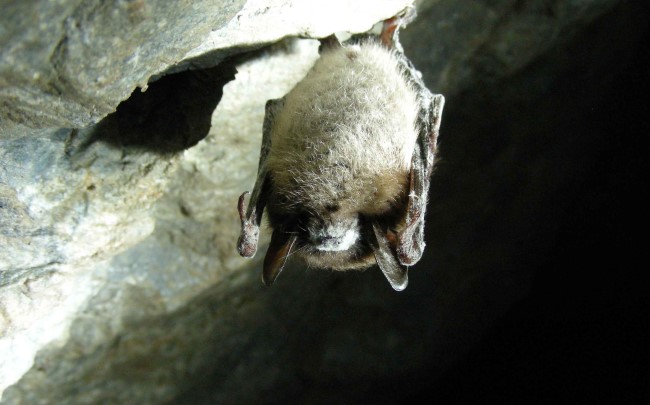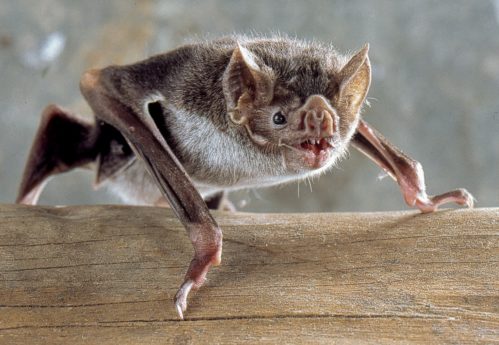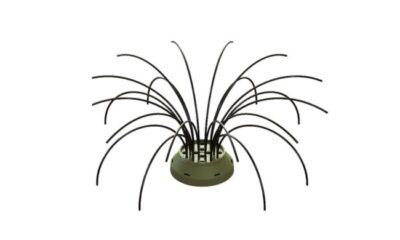Uncategorized
We Can’t Stop Here; This is Bat Country

At least they won’t guano on your side of the bed. Just sayin’.
Truth is, all of America is “bat country.” Here’s what to do if you find one in your home …
You might associate bats with fall and the Halloween season, but you shouldn’t be surprised if you find one in your home during the summer months. At this time of year, baby bats (called pups) are learning to fly and leaving their roosts for the first time. Sometimes this means you’ll find one in your home because it wandered in; sometimes you’ll find one because it’s been roosting in your attic.
Most American bats feed almost exclusively on insects. Vampire bats are real, but they’re only found in Central and South America with a few appearing in extreme Southwestern Texas. Bats rely on standing water for both drinking and as a source of insects. Female bats have increased water needs when they are producing milk for their young. This may drive them towards human habitations during drought.

Still a better girlfriend than Amber Heard.
If you discover bats roosting in your home, what should you do?
Groups of bats in homes are often maternity colonies of female bats and their babies. The females typically come out of hibernation and take up residence in a structure to give birth, usually in May or June. They then have their babies and begin to increase their activity to support lactation — this is typically when people begin to notice the bats. The young are also becoming more active and starting to fly, which also draws more attention.
“This timeframe is the hardest time of year for dealing with bat nuisance issues,” Hersey said. “Since the young can’t fly yet and are reliant on their mother’s milk, preventing the mothers from returning to their roosting spot will kill the babies. Because bats are a protected wildlife species, it’s illegal to kill them.
“I’ve also seen where poorly timed removals can lead to bats in attics suddenly finding their way inside someone’s home because the mothers are trying to reach their young. So, unless there is a human health and safety issue where bats are coming into close contact with people, we do not permit bat colony removal during this time of year. However, you can take actions to prevent them from getting into the living areas of your home. Although it may be inconvenient, you should wait until the young can fly, and then you can safely, humanely and permanently address the problem.”
If you suspect there is a colony of bats in your attic, you will need to contact a local, permitted wildlife nuisance control company for help. The DWR will coordinate with that company to authorize the removal at specific times of the year that won’t harm the pups.

This is a vampire bat. You can shoo it off with a broom. Unlike Amber Heard.
What to do if you discover bats inside your house
Because bats can be carriers of rabies — a deadly virus that can be transmitted to people — you should never handle a bat with your bare hands. If you do have physical contact with a bat, contact your local health department for guidance. If you find a bat inside the living area of your home, open a door or window, turn off the lights inside your house and turn on a porch light outside. Leave the room and allow the bat to leave on its own.
If the bat does not make its way outside on its own, you can carefully remove it. Here are tips for removing bats from your home:
- Wearing heavy leather gloves, place a small box or can over the bat.
- To create a lid, slide a piece of cardboard between the can and the surface where the bat was located (usually a wall or curtain), enclosing the bat inside the container.
- Then, take the bat outside and release it on a tree or other high object.
Bats will also occasionally use porches or overhangs as a night roost, where they can rest, digest and excrete waste between meals. If bats are regularly using a porch, try hanging streamers, balloons or other objects (like old CDs) that will move with a breeze. This seems to discourage bats from hanging out.
Tips to prevent bats from roosting in your attic
- Cool your attic with fans to make it uncomfortable for bats to take up residence.
- Inspect the outside of the building for openings and gaps in siding, chimneys and roof lines.
- Seal cracks and holes with caulking, hardware cloth, foam rubber, foam sealant, tar paper and chimney caps. Do not do this, however, when bats have pups in May through August. Fall is the best time to seal these openings, especially when bats are vacating their roosts.
- After August, when the young can fly, you can also place bird netting over an exterior opening. Staple it down at the top and the sides, leaving the base open. Bats will be able to drop down the netting to leave, but cannot reenter the roost. Leave the netting in place for four to five days or until all the bats have left, and then seal the holes.
-

 Hiking & Climbing1 week ago
Hiking & Climbing1 week agoWhen Bears Bring the Drama: A Tail—or Should I Say “Tale”?
-

 Adventure1 month ago
Adventure1 month agoREACTION: Trump’s Make America Beautiful Again Agenda
-

 Gear2 months ago
Gear2 months agoLet Freedom RING! Primary Arms’ Independence Day Category Sale Starts NOW
-

 Adventure2 months ago
Adventure2 months agoU.S. Bighorn Sheep Going Home to Canada
-

 Camping & Survival3 days ago
Camping & Survival3 days agoField Dressing 101: Knowing When It’s Their Turn
-

 Fishing1 month ago
Fishing1 month agoMy Wacky Bush Brings All the Bass to the Yard
-

 Adventure3 weeks ago
Adventure3 weeks agoNo Ivy Required: University of Montana’s New Center for Hunting and Conservation
